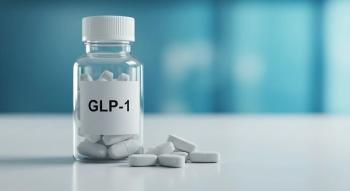
Baricitinib Shows Early Response, Improved Patient-Reported Outcomes in Rheumatoid Arthritis
A post-hoc analysis of a pair of phase 3 trials evaluating baricitinib in patients with rheumatoid arthritis (RA) showed significant improvement in patient-reported outcomes compared with placebo and adalimumab (Humira).
A post-hoc analysis of a pair of phase 3 trials evaluating baricitinib in patients with rheumatoid arthritis (RA) showed significant improvement in patient-reported outcomes compared with placebo and adalimumab (Humira).
Baricitinib is a once-daily oral selective JAK1 and JAK2 inhibitor for the treatment of autoimmune and inflammatory diseases. Improvements seen in the RA-BEAM and RA-BUILD phase 3 trials included joint pain as well as the severity of morning joint stiffness and tiredness.
“Our study results show that treatment with baricitinib rapidly led to significantly greater symptom improvement compared to adalimumab and placebo,” said Terence Rooney, MD, senior medical director for baricitinib at Eli Lilly. “The results are encouraging, and further support baricitinib as a potential oral treatment for those living with RA.”
RA-BEAM is a 52-week study that included 1307 patients with active moderate-to-severe RA, despite ongoing treatment with methotrexate. Patients were randomized to receive once-daily placebo (n=488), once-daily 4 mg baricitinib (n=487), or biweekly 40 mg Humira (n=330).
All of the patients received background methotrexate, and at week 24, the patients in the placebo group were moved to the baricitinib treatment arm. The results of the trial showed that in comparison to placebo, patients in the baricitinib treatment group had significant improvements in joint pain, severity of morning joint stiffness, and tiredness as early as day 3.
Furthermore, they experienced significant improved duration of morning joint stiffness by day 5. The improvements with baricitinib were found to be significantly greater than Humira by day 17 for joint pain, severity of morning joint stiffness by day 19, and tiredness at day 21.
Compared with placebo, the serious adverse events (SAEs) rates were similar for baricitinib and lower for Humira, while serious infection rates were similar across the groups. The most common AEs for baricitinib were bronchitis and nasopharyngitis, and 1 event of tuberculosis was reported in each of the baricitinib and Humira groups.
For the RA-BUILD study, researchers enrolled 684 patients with moderate-to-severe RA who previously had an inadequate response to or were intolerant of 1 conventional synthetic disease modifying antirheumatic drug (csDMARD) and had not received a biologic DMARD.
In addition to background therapy, patients received either once-daily baricitinib (2-mg or 4-mg) or placebo. The results of the RA-BUILD study showed that 4-mg baricitinib significantly improved joint pain, severity and duration of morning joint stiffness, and tiredness by days 4, 4, 10, and 3, respectively, compared with placebo.
Incidence of SAEs in the baricitinib treatment group included serious infections, and was similar to placebo. There was a single case of tuberculosis reported in a patient who was given baricitinib.
The most common AEs were consistent with prior studies of baricitinib in RA.
“Across its pivotal studies, baricitinib has consistently shown significant and rapid improvement of some of the most commonly felt symptoms experienced by patients with RA,” said Steven Stein, MD, chief medical officer of Incyte Corporation. “These data, especially the strong patient-reported outcomes in patients who did not have an acceptable response with their previous conventional synthetic DMARD therapy, underscore previous results and the potential benefits of baricitinib seen in patients with this devastating disease.”
The findings were presented at the Annual American College of Rheumatology (ACR)/Association of Rheumatology Health Professionals (ARHP) meeting in Washington, DC.
Newsletter
Stay informed on drug updates, treatment guidelines, and pharmacy practice trends—subscribe to Pharmacy Times for weekly clinical insights.






































































































































































































